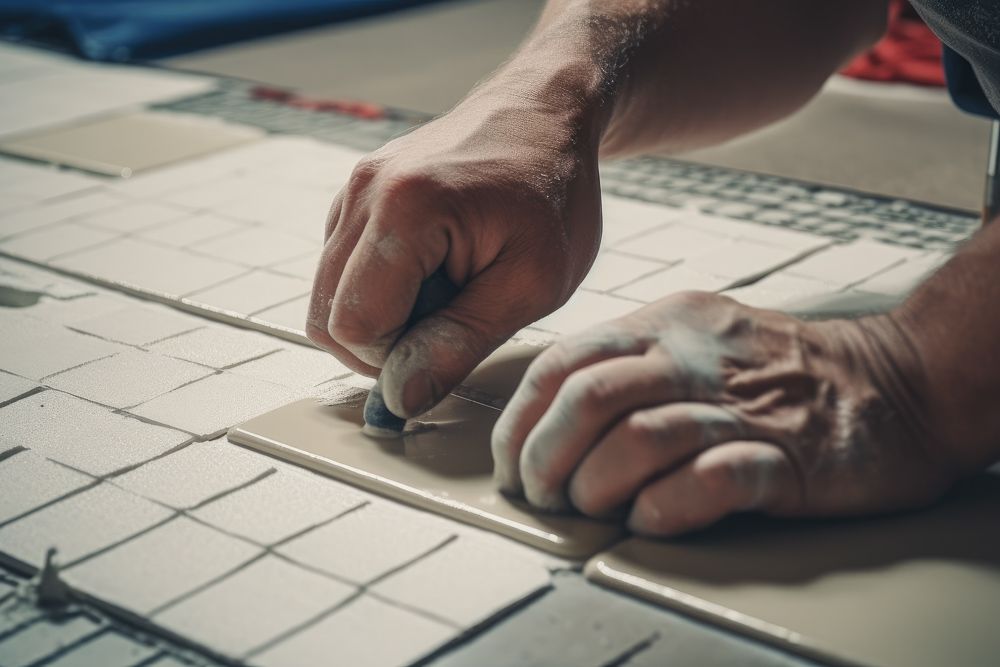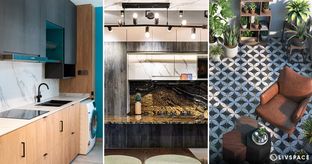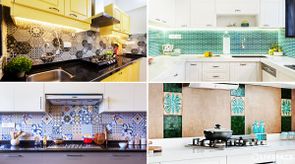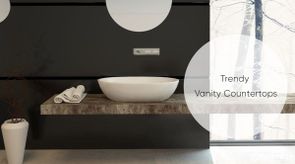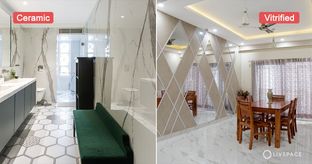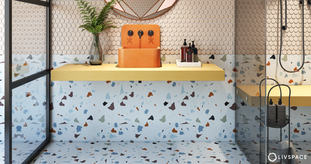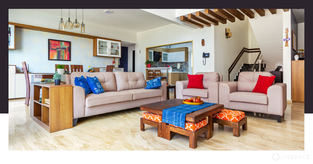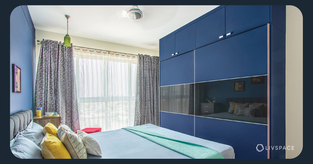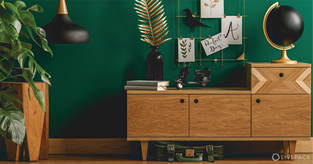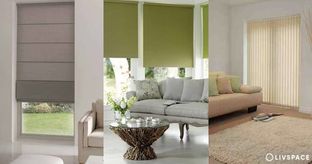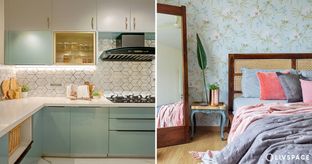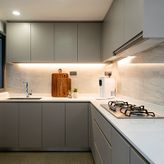In This Article
- What are ceramic tiles?
- Types of ceramic tiles offered by Livspace
- Which ceramic tiles should you choose?
- What is the difference between ceramic and regular tile?
- Are ceramic tiles expensive?
- Are ceramic tiles waterproof?
- How to clean ceramic tiles?
- How long do ceramic tiles last?
- Are ceramic tiles slippery?
- Do ceramic tiles get hot?
- Are ceramic tiles breakable?
- Are ceramic tiles good for a kitchen?
- Are ceramic tiles good for a bathroom?
- Where is the best place to use ceramic tile other than kitchens and bathrooms?
- How can Livspace help you?
Ceramic tiles have been used for centuries to adorn floors, walls, and even countertops, offering a blend of beauty, durability, and functionality. Whether you’re renovating your kitchen, bathroom, or any other space, ceramic tiles can add a touch of elegance, style, and practicality to your home. This is the only guide on ceramic tiles you’ll ever need!
What are ceramic tiles?
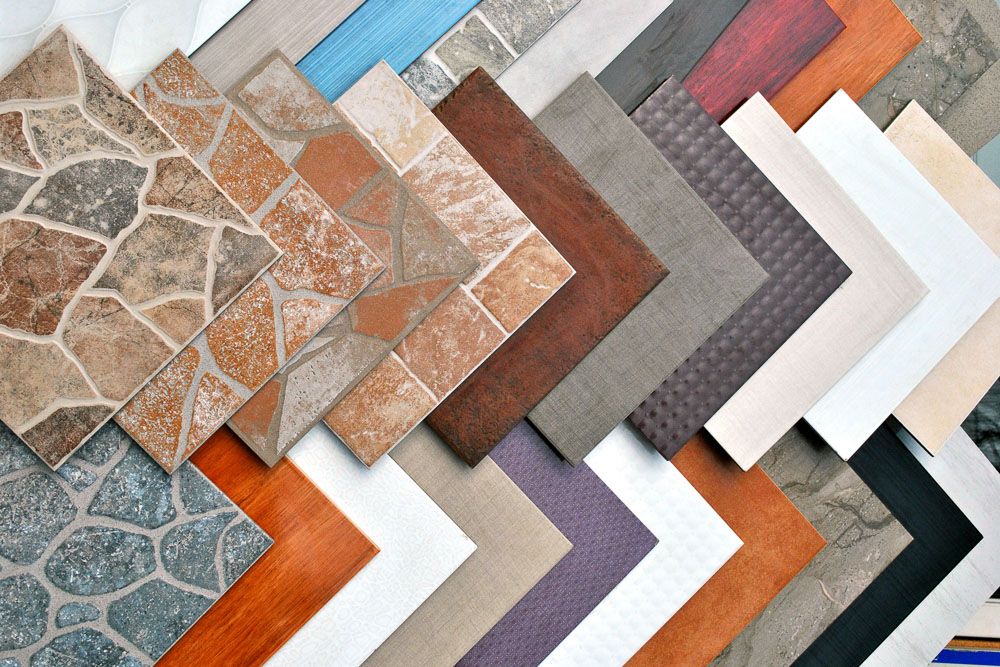
Ceramic tiles are flooring material made from clay that is fired in a kiln at high temperatures. They come in a wide variety of colours, patterns, and finishes, making them a versatile and popular choice for both residential and commercial spaces.
Ceramic tiles are known for their durability, stain resistance, and ease of maintenance. They are also a relatively affordable flooring option compared to other materials like natural stone or hardwood.
Types of ceramic tiles offered by Livspace
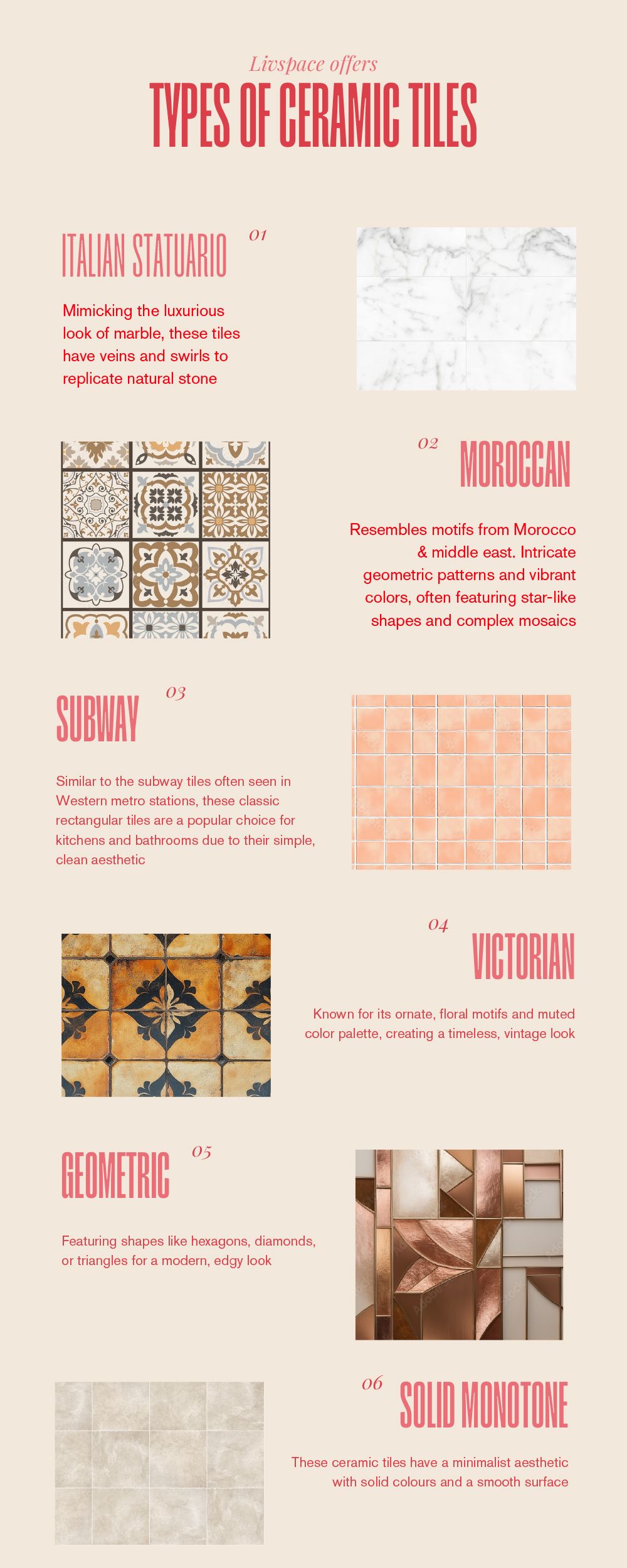
Livspace also offered these three types of ceramic tiles based on their finishes:
- Glossy: A surface that shines and reflects light, making colours appear brighter and more intense
- Matte: A surface that is smooth but does not reflect light, giving it a soft and muted appearance
- Sugar: A surface that is slightly matte with a subtle sparkle or grainy texture, similar to the look of sugar
Which ceramic tiles should you choose?
- Moroccan: Perfect for homes with a warm, colourful, or handcrafted aesthetic. Ideal for those who want to add personality and flair to their space
- Italian Statuario: Great for minimalist, modern, or classic kitchens with a focus on elegance and simplicity. Pairs well with high-quality fixtures and finishes
- Subway: Ideal for contemporary, industrial, or traditional kitchens. A simple, stylish choice for homeowners who want a no-fuss backsplash
- Victorian: Perfect for heritage homes or spaces looking to incorporate classic, ornate details. Complements traditional cabinetry and fixtures
- Geometric: A great choice for contemporary or modern kitchens where bold design choices are appreciated. Ideal for those who love playful, artistic elements
- Solids: Perfect for modern, minimalist, or monochromatic kitchens where simplicity is key. Great for adding bold splashes of colour or maintaining an all-white, streamlined look
What is the difference between ceramic and regular tile?
The main difference between ceramic tiles and other regular types of tiles lies in their composition, density, and durability.
| Point of difference | Ceramic tile | Vitrified tile | Porcelain tile |
| Make | Made from clay fired at a lower temperature | This is a type of ceramic tile made from a special clay mixture fired at extremely high temperatures | This is form of ceramic tile made from a finer-grained clay and fired at a higher temperature |
| Density and porosity | Generally less dense than porcelain or vitrified tiles, making them more susceptible to water absorption | Virtually non-porous, making them highly resistant to water, stains, and scratches | Are denser and more durable than ceramic tiles but are less porous making them highly resistant to water absorption and stains |
| Use | Often used for interior flooring and wall coverings | Often used in high-traffic areas, such as commercial spaces and outdoor applications | Are commonly used for both interior and exterior applications including flooring and countertops |
Are ceramic tiles expensive?
Cost of ceramic tiles is ₹60 per square foot making them more affordable than other types of tiles.
Are ceramic tiles waterproof?
Ceramic tiles are generally considered waterproof, but their water resistance depends on several factors.
- Glazing: Glazed ceramic tiles have a protective coating that makes them more resistant to water penetration than unglazed tiles
- Porosity: The porosity of the ceramic tile can affect its water resistance. Denser, less porous tiles are generally more waterproof
- Installation: Proper installation with waterproof grout and adhesives is crucial to maintain the waterproof integrity of ceramic tiles
While ceramic tiles are highly water-resistant, it’s important to note that no material is completely impervious to water. In areas with high humidity or frequent water exposure, such as bathrooms or kitchens, it’s recommended to use ceramic tiles that are specifically designed for wet environments and to follow proper installation guidelines.
How to clean ceramic tiles?

Ceramic tiles are a popular choice for flooring and wall coverings due to their durability and ease of maintenance. Here’s a simple guide on how to clean them effectively:
1. Sweep or vacuum: Start by removing any dirt, dust, or debris from the surface using a broom or vacuum cleaner
2. Mopping: Fill a bucket with warm water and a mild detergent. Dip a mop into the solution and wring it out thoroughly to avoid leaving excess water. Mop the tiles in a circular motion, ensuring you cover all areas
3. Stubborn stains: For stubborn stains, you can add a small amount of baking soda or a specialized tile cleaner to the water. Gently scrub the affected areas with a soft-bristled brush or a non-abrasive sponge
4. Rinse: After cleaning, rinse the tiles with clean water to remove any detergent residue
5. Dry: Use a clean, dry cloth or mop to dry the tiles thoroughly. This will prevent water spots and mould growth
Additional tips:
- Regular cleaning: For routine maintenance, clean your ceramic tiles weekly with a mild detergent solution
- Deep cleaning: For a deeper clean, consider using a steam cleaner or a specialised tile cleaner every few months
- Avoid harsh chemicals: Avoid using harsh chemicals or abrasive cleaners that can damage the surface of the tiles
- Grout cleaning: Don’t forget to clean the grout between the tiles regularly. You can use a grout cleaner or a mixture of baking soda and water to remove dirt and grime
How long do ceramic tiles last?
High-quality ceramic tiles are incredibly durable and can last for decades or even centuries. With proper care and installation, ceramic tiles can retain their beauty and functionality for a very long time, even surpassing the lifespan of other flooring materials.
Are ceramic tiles slippery?
Ceramic tiles can be slippery, especially when wet. The smoothness of the glaze and the presence of water can create a slippery surface. However, there are several factors that can influence the slipperiness of ceramic tiles:
- Glaze type: Glossy glazes are generally more slippery than matte glazes
- Texture: Tiles with textured surfaces or raised patterns can provide better traction and reduce slipperiness
- Installation: Proper installation with the correct grout and adhesives can help prevent tiles from becoming loose or uneven, which can contribute to slipperiness
To minimise the risk of slipping on ceramic tiles:
- Use non-slip mats or rugs: Place non-slip mats or rugs in areas where you’re most likely to be barefoot or wearing socks, such as the bathroom or kitchen
- Choose textured tiles: Opt for ceramic tiles with textured surfaces or raised patterns for areas where slip-and-fall accidents are a concern
- Regular cleaning: Keep your ceramic tiles clean and free of dirt and debris, as these can contribute to slipperiness
Do ceramic tiles get hot?
Yes, ceramic tiles can get hot, especially when exposed to direct sunlight or radiant heat. The colour and thickness of the tile can also affect how hot it becomes. Darker colours tend to absorb more heat than lighter colours, and thicker tiles may retain heat longer.
It’s important to consider the climate and the specific location of the ceramic tiles when choosing this material. In areas with hot summers, it may be necessary to take steps to mitigate the heat absorption of ceramic tiles, such as using rugs or mats or opting for lighter colours.
Are ceramic tiles breakable?
Ceramic tiles are actually quite durable and can last for many years with proper care. The idea that they are fragile is a misconception. However, like any material, they can be damaged if subjected to excessive force, such as dropping heavy objects on them, especially if they were not installed correctly.
Are ceramic tiles good for a kitchen?
#1: Ceramic backsplash,wall and flooring tiles
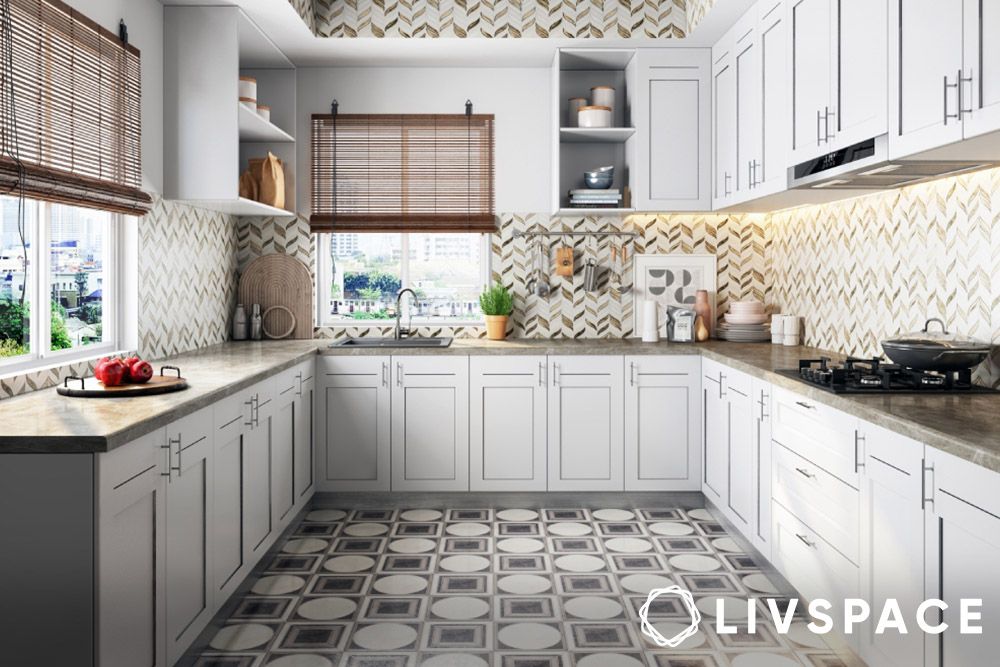
Because of the aforementioned properties of ceramic tiles, it is perfect for high-stain prone areas like kitchen backsplashes and flooring. Its cool temperature makes it a good flooring option in rooms that tend to get hot.
P.S: We love the white, black and grey ceramic floor tiles in this kitchen; a true design element that breaks the visual monotony of the white cabinets.
#2: Ceramic countertop tiles
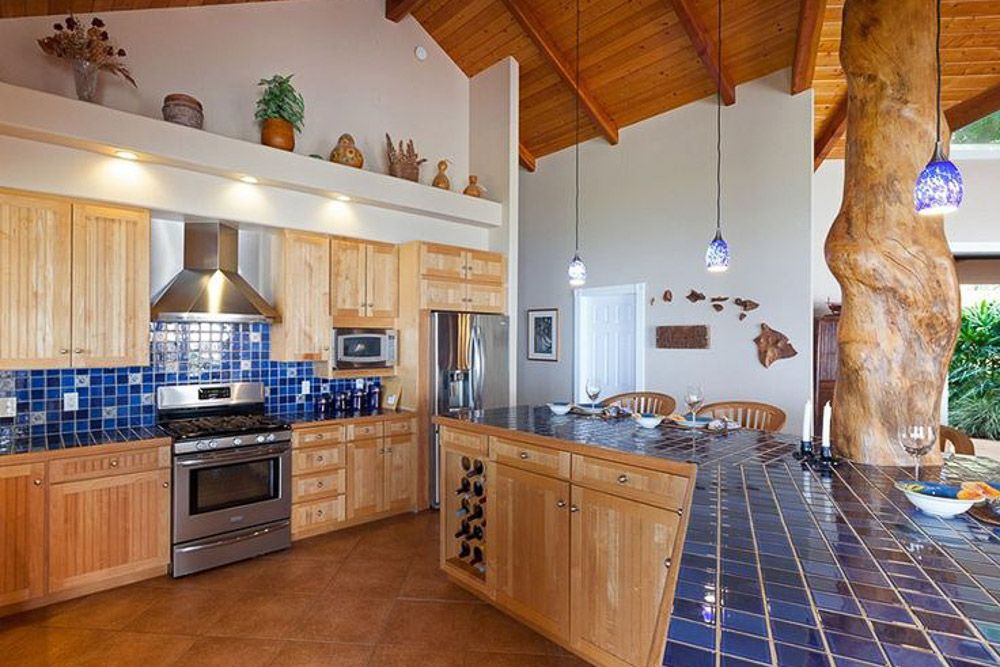
Image source: Pinterest @cabinetkings
These tiles are heat-resistant, making them ideal for kitchen countertops and other areas exposed to high temperatures. However, they can be fragile and may crack if not handled carefully. Avoid placing hot pans directly on the surface, as this can cause damage.
#3: Sinks with ceramic tiles
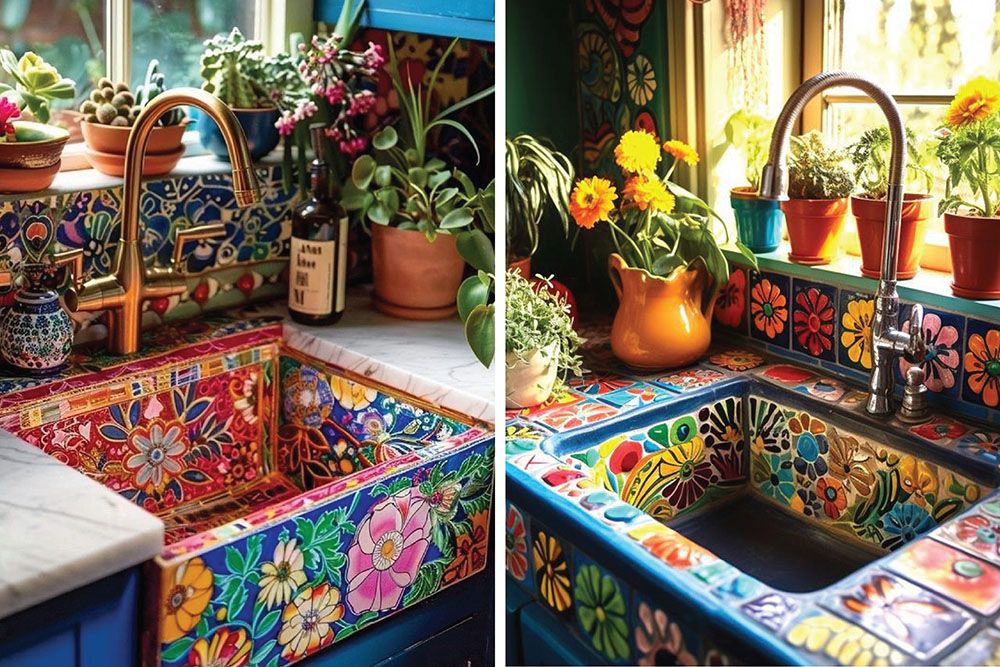
Image source: Pinterest @bonsaimaryplants and @gunchaksvetlana
Ceramic sinks have been a popular choice for bathrooms and kitchens for centuries due to their durability, versatility, and aesthetic appeal. They are a budget-friendly option compared to other materials, making them suitable for rental properties. Many manufacturers provide extended warranties.
Are ceramic tiles good for a bathroom?
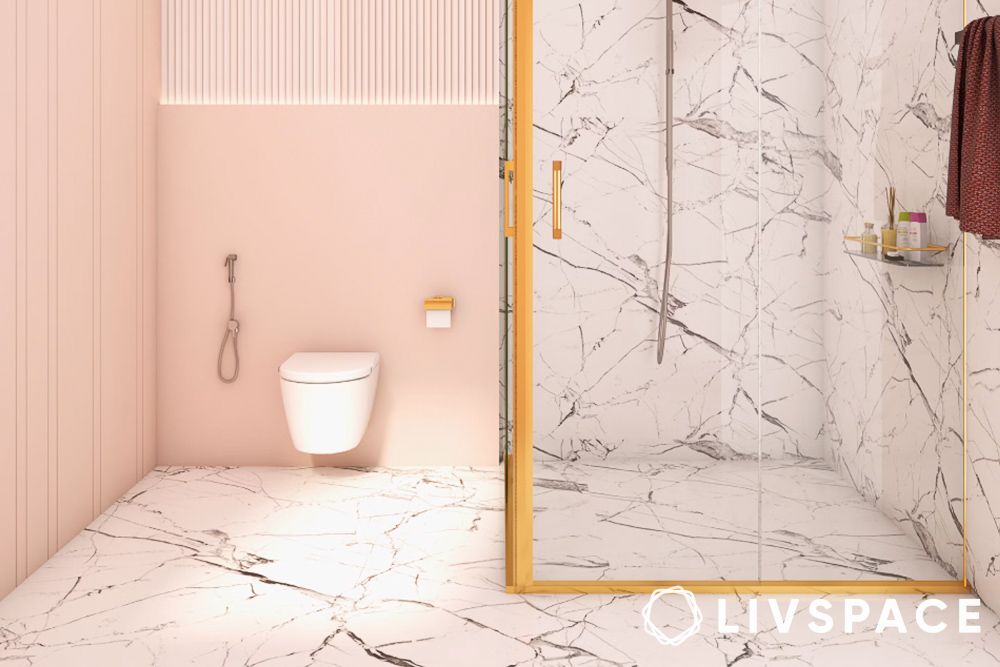
Bathroom ceramic wall tiles and flooring are a popular and practical choice. Its resistance to moisture, stains, bacteria, and odours makes it ideal for moisture prone areas.

Image source: Pinterest @Home_Made_Graceful and @charsan33884
Same as kitchen sinks, ceramic sinkscan be an aesthetic addition to your bathroom design. They are even more practical in bathrooms because you don’t have to worry about damaging them with hot dishes.
Where is the best place to use ceramic tile other than kitchens and bathrooms?
#1: Near a swimming pool
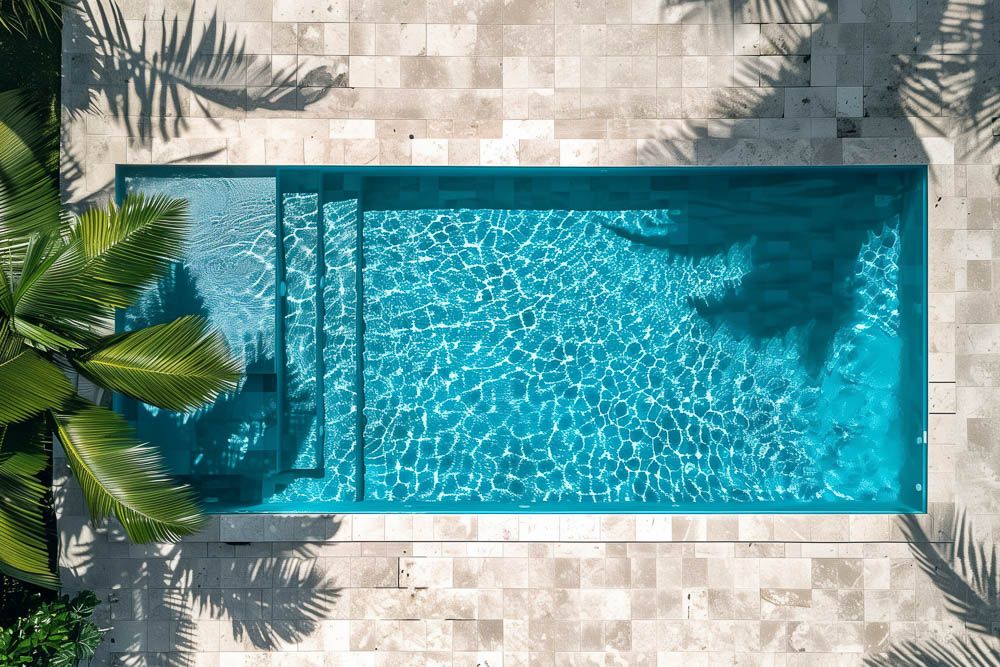
Ceramic tiles are an excellent choice for areas near swimming pools due to their durability, water resistance, and slip resistance. Their non-porous surface prevents water absorption, making them resistant to mold and mildew. Additionally, ceramic tiles can be treated with anti-slip finishes, providing a safe and secure surface around the pool.
#2: On a fireplace
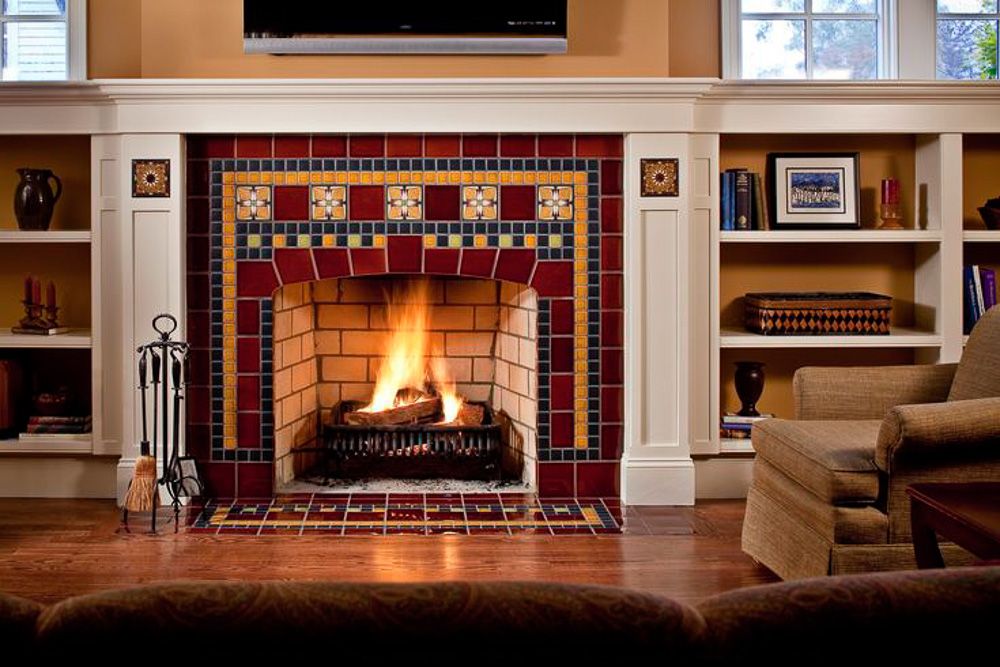
Ceramic wall tiles are a popular choice for fireplaces due to their heat resistance and ability to withstand the high temperatures generated by a fire. They are also available in a wide range of colours and styles, allowing you to create a unique and personalised fireplace surround.
#3: On staircases
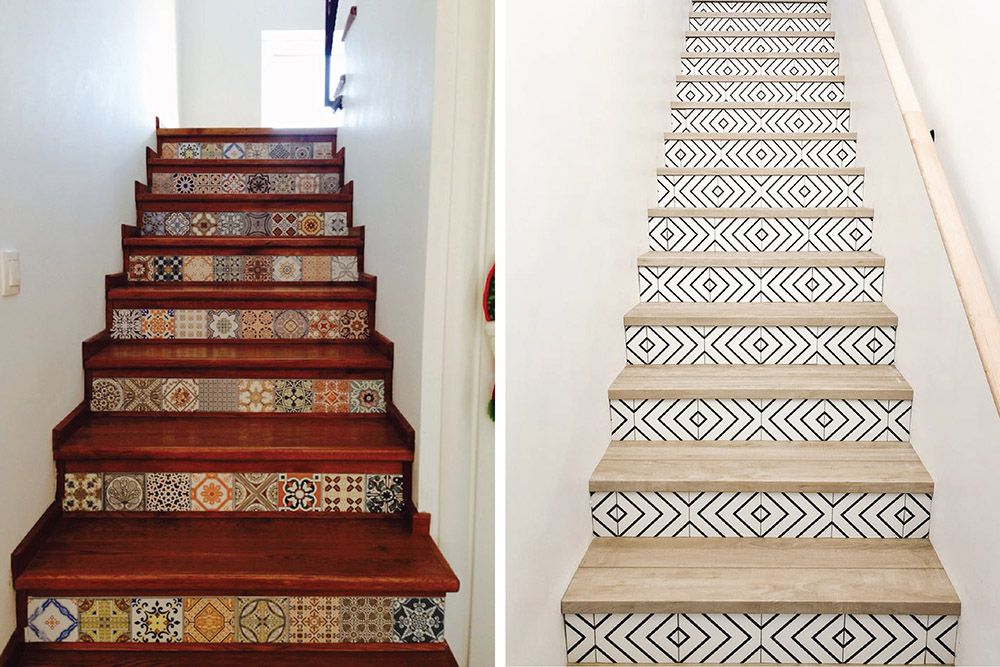
Image source: Pinterest @Sottocer and @gprecup
Ceramic tiles are a durable and low-maintenance option for staircases. White ceramic tiles or not, their slip-resistant properties, especially when glazed with a textured finish, can help prevent accidents. Ceramic tiles are also easy to clean and maintain, making them a practical choice for high-traffic areas like staircases.
#4: As floating shelves
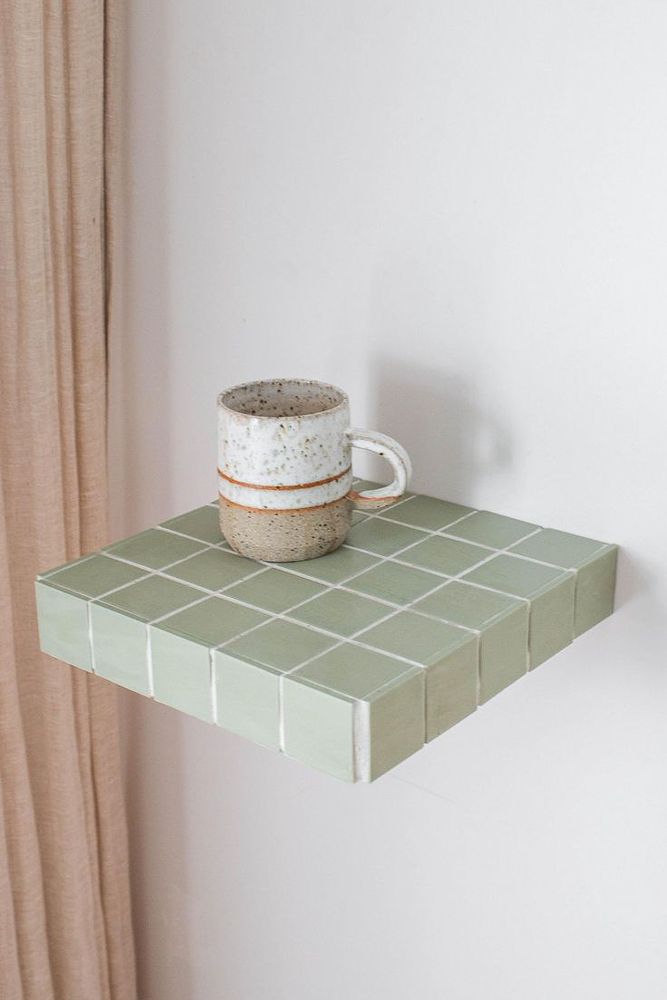
Image source: Instagram @genevavanderzeil
Ceramic tiles can be used to create a modern and eye-catching floating shelf unit. The tiles can be arranged in various patterns or mosaics to add a decorative element to the space. White ceramic tiles can seamlessly blend in with the ultra-minimalist white walls.
#5: Coffee tables
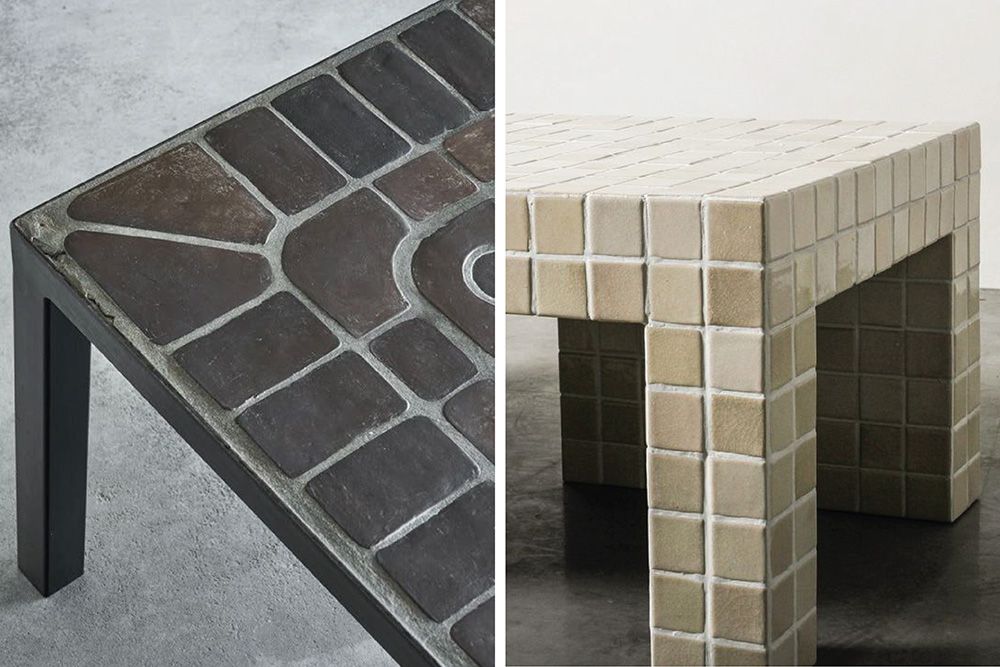

Image source: Pinterest @etsy
While not as common as other materials like wood or glass, ceramic tiles can be used to create a unique and stylish coffee table. Their durability makes them suitable for everyday use, and they can be easily cleaned with a mild detergent.
How can Livspace help you?
Choosing the right materials for your house can be confusing. Luckily, our team of seasoned experts are here to help you.
- Our team can custom design your dream home with curated render designs and expert advice
- We have delivered over 75,000 happy homes
- Count on us for premium-grade materials that are not only high-quality but also built to last
Book an online consultation with Livspace today to know more. Visit your nearest experience centre to get a first-hand look at our catalogue material collection.
Disclaimer: All contents of the story are specific to the time of publication. Mentions of costs, budget, materials, finishes, and products from the Livspace catalogue can vary with reference to current rates. Talk to our designer for more details on pricing and availability. The Pinterest and Instagram images used in this blog are solely for illustrative purposes. We do not claim ownership of these images, and all rights belong to their respective owners. If you are the owner of any image and would like it to be removed or credited differently, please contact us.


